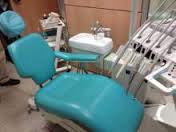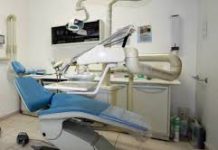Teeth problems.
Tooth decay is a natural process that involves loss of mineral from the enamel. The enamel is the outermost layer of the teeth, the harder one. The tissue of the enamel, losing minerals because of the action of bacteria, thins until cavities appear.
Cavities are almost the most common dental disease, both among children and among adults. If cavities are not treated promptly, they can degenerate into abscesses, and in severe cases, can result in the loss of the tooth. Furthermore, the accumulation of plaque, which contains bacteria, can also cause gum diseases such as gingivitis and periodontitis.
Dental decay, although it is a natural process, can be countered by a good oral hygiene and healthy eating habits. In fact, the bacteria feed primarily on sugar and produce acid, and they continue to attack the dental enamel after about half an hour that we stop eating. For these reasons, dentists suggest to brushing teeth at least twice a day and flossing once, to reduce dental plaque; avoid eating sugary or starchy foods and sugary and acid drinks during the day, most of all snacks between meals, to lessen acids.
Saliva is a natural agent against bacteria, as washes away food and harmful sugars, so that a dry mouth can be an environment conducive to the proliferation of bacteria.
Usually, tooth decay doesn’t cause any pain, but symptoms may be a toothache, either continuous or occasional; tooth sensitivity, especially due cold or hot; white, grey, brown or black spots appearing on teeth; bad breath; an unpleasant taste in the mouth.
Tooth decay causes.
Besides oral hygiene and foods habits, regularly going to the dentist is the most important thing to do to avoid tooth decay consequences; the dentist can control teeth and notice the early stages of cavities before they become worse, or he/she can resort to X-ray. This is the case to say that prevention is better than cure.
A dentist or a dental hygienist can suggest us how to brush better and clean our teeth and give advice on nutrition.
Dental procedures to prevent or treat tooth decay are different, according to the severity of the situation.
Tooth decay.
For early stage tooth decay, the dentist can apply sealants on the surface of the molars, or fluoride. In cases of cavities, usually, dental filling is the traditional treatment, that consist of removing the dental decay and filling the hole, under local anaesthetic. If the tooth is too badly damaged a crown may be necessary.
If tooth decay has spread to the pulp, a root canal treatment can be performed to remove the pulp.
Finally, if the tooth can’t be restored, it may be removed.





